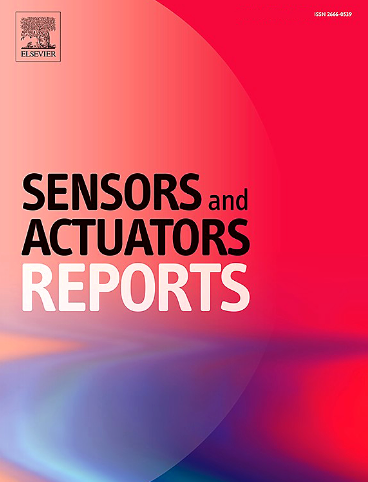A highly sensitive tapered fiber biosensor modified by PDMS combustion product and graphene oxide for MUC1 detection
IF 6.5
Q1 BIOTECHNOLOGY & APPLIED MICROBIOLOGY
引用次数: 0
Abstract
It is a critical challenge to develop reliable, stable, and sensitive biosensors for specific detection of mucin 1 (MUC1). In this paper, a label-free biosensor based on polydimethylsiloxane (PDMS) combustion product and graphene oxide (GO) functionalized tapered fiber (PGTF) was proposed and demonstrated for high sensitivity MUC1 detection. The PDMS combustion product is mainly composed of SiO2, which can be firmly bonded to the surface of the fiber, effectively increasing the specific surface area of the fiber. At the same time, the combination of the PDMS combustion product and the fiber cladding material will generate defects in the cladding, resulting in easier leakage of light inside the fiber core. Therefore, a strong evanescent field and interference effect can be obtained without drawing the tapered fiber waist very thin, which contributes to improving the sensitivity of fiber biosensor. In addition, GO has good biological affinity, a large specific surface area, and abundant functional groups, which can provide more binding sites for the attachment of biomolecule. The detection limit of the PGTF is 0.11 pM when the diameter of the fiber taper is 50 μm and modified with five layers of PDMS combustion product. Experimentally demonstrated sensor specificity and reproducibility, indicating that the sensor has a practical value for real applications. The PGTF has great potential as a simple, sensitive, and label-free assay in the field of cancer marker detection.
求助全文
约1分钟内获得全文
求助全文
来源期刊

Sensors and Actuators Reports
Multiple-
CiteScore
9.60
自引率
0.00%
发文量
60
审稿时长
49 days
期刊介绍:
Sensors and Actuators Reports is a peer-reviewed open access journal launched out from the Sensors and Actuators journal family. Sensors and Actuators Reports is dedicated to publishing new and original works in the field of all type of sensors and actuators, including bio-, chemical-, physical-, and nano- sensors and actuators, which demonstrates significant progress beyond the current state of the art. The journal regularly publishes original research papers, reviews, and short communications.
For research papers and short communications, the journal aims to publish the new and original work supported by experimental results and as such purely theoretical works are not accepted.
 求助内容:
求助内容: 应助结果提醒方式:
应助结果提醒方式:


